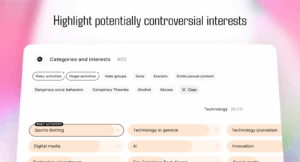Key Takeaways
- An artworker plays a crucial role in the design process, ensuring that designs maintain their integrity and reach their full potential by correcting colors, placement, fonts, and inconsistencies before they are sent to print.
- Artworkers may also be asked to create design visuals or mock-ups to show how a finished design could look. Their early involvement in a project can save time and money by preventing endless revisions.
- While traditionally focused on printed media, many artworkers now work with other forms of media, particularly web designs and digital graphics. This skill is increasingly important as many industries look to reduce their use of printed media.
- Key skills for an artworker include an exceptional eye for detail, extensive Mac skills, and experience across all forms of media. Artworkers are a valuable asset in the design industry, as they can independently propel a design project from the first sketch to the final print.
The distinct roles of graphic designers, web designers, and illustrators are fairly obvious. The titles themselves serve as clear, succinct definitions of their respective duties. But, the role of an “artworker” is a mystery to many, even those who work within the design and print industries. This is most likely because artworkers have a wide and varied role that can’t be described as concisely as “illustrator” or “graphic designer.” But, despite the somewhat nebulous nature of their job, artworkers have an important, technical, detail-oriented role.
Making Files Print Ready
While graphic designers are the creative force behind any design, it is the artworker who ensures that the design maintains its integrity and reaches its full potential by correcting colors, placement, fonts, and inconsistencies. In layman’s terms, an artworker “tidies up” a design before it is sent to print. This can involve typography tuning techniques (like kerning and ligature), as well as color-related work to assure that the designer’s careful color decisions aren’t affected as the design makes its way through the approval, printing and publishing processes.
If you have created a graphic design on your home computer and then printed it, you may have found that designs do not always print exactly the way you had intended. The printed colors may not precisely match those on your screen, the typography may look blurry, and the images may seem distorted, not to mention the possibility that part of your design is missing because most desktop printers do not print edge-to-edge.
In the professional design world, an artworker will correct all of those issues before the design is ever sent to print. This is particularly important when sending a large run of several thousand units to print, as any color, typography, or image mistakes that compromise the design will cost a lot of money and cause a lot of frustration. Visually proofing a design “on-screen” is not always a reliable means of ensuring it will print correctly; passing the design to an artworker is a far better way to make sure your design comes out problem-free.
Creating Design Visuals and Mock-Ups
Occasionally, an artworker may be asked to design visuals or mock-ups to show how a finished design could look. Their input from the very beginning of a project can be invaluable; they can save time and money by correcting issues early and preventing endless revisions. Professional artworkers have the ability to see problems with designs that are intended for a variety of media, and their expertise often ensures that a job runs on schedule and under budget.
Working with Different Forms of Media
Traditionally, artworker jobs were focused around printed media. While that still forms the bulk of their work, many artworkers are now required for other forms of media, particularly web designs and digital graphics. Working with digital media is now a must-have skill for anyone looking to enter the design industry as an artworker or any other profession, because many industries are actively looking to reduce the amount of printed media they use in favor of digital equivalents.
Is It For You?
A good artworker will have an exceptional eye for detail, extensive Mac skills, and experience across all forms of media. While artworkers generally have little or no creative input, their skills are vital when it comes to making a designer’s vision a reality, especially for commercial printing. If you are looking to get into the design industry, artworker jobs are a good way to complement your design skills with specialized technical proficiencies. A designer with artworker skills would be a truly valuable asset to any group, possessing the ability to independently propel a design project from the first sketch to the final sheet from the printing press.
Do you collaborate with an artworker? Are you often asked to work on color correction, kerning or ligature? Do artworkers have distinct roles, or do organizations expect all of the needed skills in one multi-talented designer?
Frequently Asked Questions (FAQs) about Artworkers
What are the key skills required to be an Artworker?
An Artworker needs to have a strong understanding of design principles, including layout, typography, and color theory. They should be proficient in using design software such as Adobe Creative Suite, including Photoshop, Illustrator, and InDesign. Attention to detail is crucial as they often need to spot and correct errors in designs. They should also have good communication skills to understand the requirements of designers and clients, and the ability to work under pressure to meet tight deadlines.
How does the role of an Artworker differ from a Graphic Designer?
While both roles involve working with visual designs, there are key differences. A Graphic Designer is typically involved in the conceptualization and creation of a design, while an Artworker takes the design and prepares it for print or digital output. This can involve resizing, formatting, and proofing the design to ensure it meets the required specifications.
What kind of projects does an Artworker typically work on?
Artworkers can work on a wide range of projects, including brochures, flyers, posters, banners, magazines, and packaging. They may also work on digital projects such as website designs, email templates, and social media graphics. Their role is to ensure that all designs are correctly formatted and ready for production.
What is the career progression for an Artworker?
Artworkers can progress in their careers by gaining experience and developing their skills. They may move into senior or lead Artworker roles, where they oversee the work of other Artworkers. Some may choose to specialize in a particular area, such as digital design or packaging. Others may move into related roles, such as Graphic Design or Art Direction.
What qualifications do you need to become an Artworker?
Many Artworkers have a degree in a related field, such as graphic design or visual arts. However, it’s also possible to enter the field with a diploma or certificate in graphic design. Practical skills and experience are often more important than formal qualifications. Many Artworkers start their careers as junior designers or interns and learn on the job.
Can an Artworker work remotely?
Yes, many Artworkers work remotely. They can communicate with clients and team members via email, phone, or video conferencing, and can share their work digitally. However, some roles may require them to be on-site, particularly if they are working with physical print materials.
What software tools do Artworkers use?
Artworkers typically use design software such as Adobe Creative Suite, including Photoshop, Illustrator, and InDesign. They may also use other tools for specific tasks, such as Acrobat for PDF editing, Sketch for web design, or After Effects for motion graphics.
How can I improve my skills as an Artworker?
Continuous learning and practice are key to improving your skills as an Artworker. This can involve taking online courses, attending workshops, or learning from other professionals in the field. Keeping up-to-date with the latest design trends and software updates is also important.
What is the average salary for an Artworker?
The salary for an Artworker can vary depending on their experience, skills, and location. According to PayScale, the average salary for an Artworker in the UK is around £23,000 per year. In the US, the average salary is around $45,000 per year.
What are the challenges faced by an Artworker?
Artworkers often have to work under tight deadlines, which can be stressful. They also need to have a keen eye for detail, as they are responsible for spotting and correcting errors in designs. Communicating with clients and designers to understand their requirements can also be a challenge.
Barry Magennis is a writer, a media professional, and an expert on media jobs and artworker jobs.







